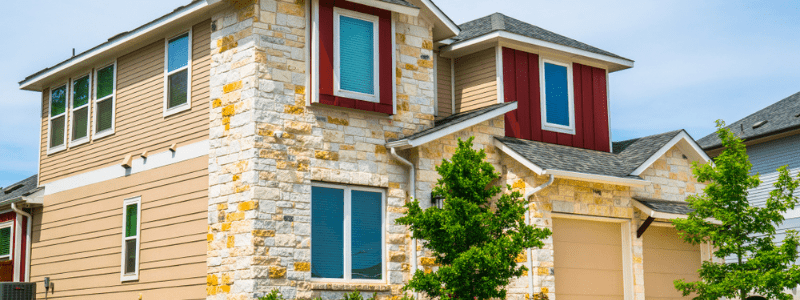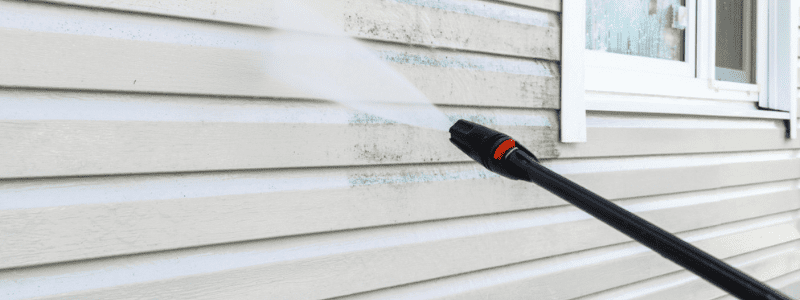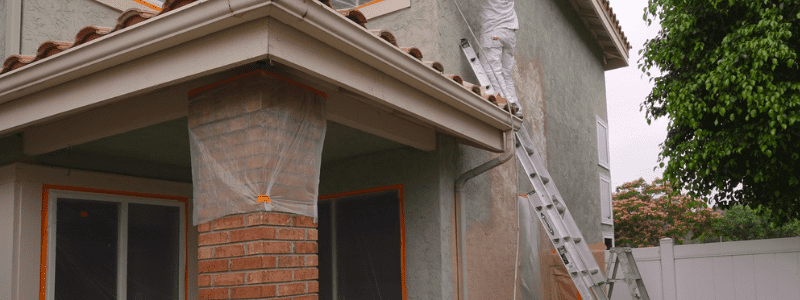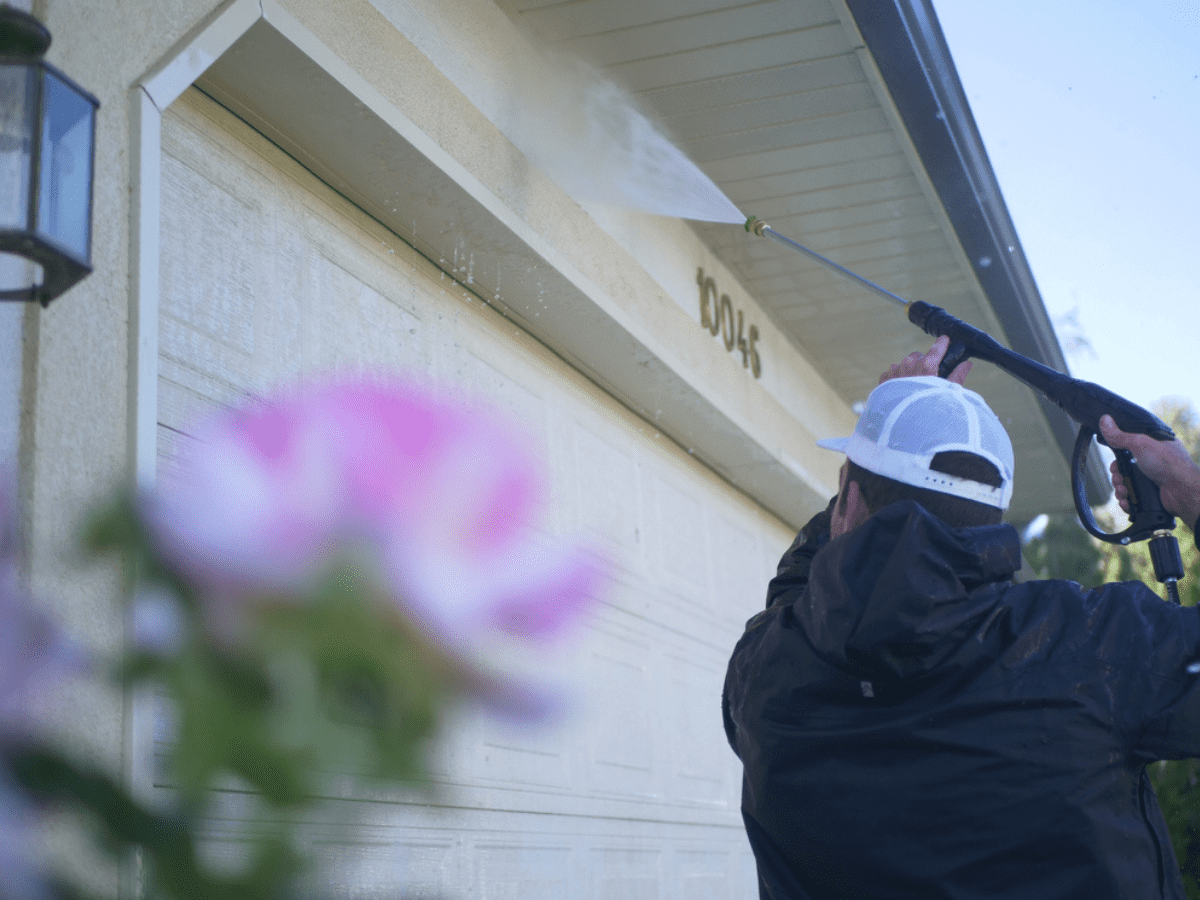Painting your home’s exterior is a big home improvement project to take on, but a fresh coat of exterior paint can easily upgrade your home’s curb appeal. To get the best possible paint job for your home, there are specific preparation steps homeowners should take before applying the first stroke of paint. Whether it’s a DIY project or handled by professional painters, house painting prep must be done properly to get the job done right. Here’s how to prep your house for exterior painting.
How to Prep the Exterior of Your House for Painting
Exterior painting can seem like an overwhelming project, but it’s really not intrusive, at all. And, with a little preparation on your end, you can make for an even smoother time.
Here’s how to prepare:

Choose a Day With the Right Weather
Although Colorado’s weather can be somewhat unpredictable, consider keeping a close eye on the weather forecast on the days leading up to your paint job.
There are a variety of reasons why you shouldn’t paint in the rain, the moisture will start to blister, ruining any work started. Moreover, rain can present difficult and dangerous working conditions. So, pick a day where there is no precipitation in sight.
It is also recommended to avoid painting in the direct sun to prevent fading and cracks. Homeowners should paint the west-facing side of their home in the morning and the east later in the day.
Temperature is also an important consideration when painting your home. Most paints work best in temperatures between 60° and 85°F with little to no wind. Painting in windy conditions can cause it to dry too quickly, resulting in cracking, and peeling. You’ll also want to choose a day with humidity ranging from 40% to 70%.

Clean Your Home’s Exterior With a Pressure Washer
Before you start painting, you want to make sure you’re painting on a clean and smooth surface, so you have to prepare the surface for painting.
This will ensure you get the best coverage possible. Pressure washing your home will remove any dirt, residue, and peeling paint from the surface, ensuring it doesn’t get painted over with the new coat of paint.
Scrape Away Loose Paint and Repair Damaged Surfaces
It’s important to inspect the exterior of your home entirely and repair anything that appears to be damaged.
With a scraping tool, remove paint that appears to be flaking, also known as “loose paint.” If you find cracks and holes around doors and windows, you can use a spackle knife and apply filler or caulk. Once dry, lightly sand the surface using sanding paper or a sanding block to get a smooth surface.
Protect Your Lawns, Gardens, and Decks
The last thing you want to do is get paint somewhere it wasn’t meant to go. While we do provide tarps and drop cloths, there are some additional things you may want to do.
When painting a home’s exterior, there is a high risk of getting paint on bushes, flowerbeds, lawns, and other outdoor structures which is why we recommend using drop cloths to cover and protect anything that might get paint on it.
Additionally, cover and confine anything that might get in the way to prevent anything from rubbing against fresh paint.
Prime Before Painting
Priming the surface of your exterior will provide a more consistent look to the paint job by providing an adhesive surface.
Failing to prime your exterior before slapping on fresh paint can result in peeling paint, especially in areas with high humidity and moisture. Additionally, cleaning can be more difficult because paint can easily fade when wiped or cleaned.
Choose the Right Paint
Choosing the right paint doesn’t end with choosing a color.
There are many types of paint and each is designed for different surfaces and is available in a variety of finishes.
You’ll want to choose a paint that is durable and can withstand different weather conditions. Additionally, you’ll want to consider drying times and clean-up when making this choice.
Enamel vs. Latex
What differentiates enamel paint and latex paint is the paint’s base. Enamel paint is typically oil-based, while latex is water-based.
Enamel paint is recommended for hard and shell-like surfaces and does a good job at air drying. They generally come in a gloss or satin finish and take an average of six to eight hours to dry with a cure time of 8 to 24 hours. It’s important to note that using enamel paint comes with a difficult process that involves the use of solvents.
On the other hand, latex paint is more malleable and works best for surfaces that might expand. It’s also beneficial to use latex paint for locations where flexibility and movement are required. Latex paints come in matte, flat, eggshell, and satin finishes and have a drying time ranging from one hour to two days. This type of paint is also known to be more environmentally friendly by producing fewer odors and toxic fumes.
Acrylic
Acrylic paint is another type of paint recommended for exterior paint jobs. This type of paint is known to have the highest durability and can resist harsh weather conditions over significant periods. It is also more resistant to fading, meaning you won’t need to worry about repainting so often.

What to Expect From Our Professional Painters
Painting your exteriors takes a lot of planning, so it might be optimal for you to hire an outside expert for the job.
A professional painter can offer expert advice on color and finishes, they’ll also have the high-quality tools and equipment they need to do the job right. This includes drop cloths and other protective materials. Additionally, professional painters will take care of any mess that comes with the job. This includes removing paint brushes, rollers, drop cloths, and cleaning up any drip or drops of paint.
Colorado Painting: Denver’s Best Painting Contractors Since 1983
Painting your exterior is a big task. Not only can it be costly, but it also requires a tremendous amount of effort and labor. This is a job you want to get right the first time.
Our team of painting contractors at Colorado Painting has over 39 years of interior and exterior painting experience, we can help you choose the right paint for your home and will work until you are satisfied.
Before we come out, we’ll give you some reminders about how to prep your house for exterior painting.
Contact us today for a free quote. You can trust Colorado Painting to get the job right.
































